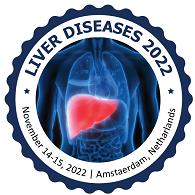
Archana Burman
Institute of Economics, University of Delhi, India
Title: Risk profile of NAFLD: Prevention and amelioration through lifestyle change
Biography
Biography: Archana Burman
Abstract
Non-alcoholic fatty liver disease (NAFLD) is emerging as the most frequent chronic liver disease worldwide, with a prevalence of 32% which is considerably higher than previously estimated and it continues to rise at a disturbing rate. Its meteoric rise is paralleled only by obesity and type 2 diabetes. Broadly, NAFLD can be classified into two major subtypes, namely, non-alcoholic fatty liver (NAFL) which displays simple steatosis with a more benign course, and non-alcoholic steatohepatitis (NASH), a more progressive disease with a large inflammatory component, which is a precursor to fibrosis, hepatocyte damage, ballooning, cirrhosis, and hepatocellular carcinoma. Although diagnostic parameters are available, NAFLD often remains undiagnosed for extended periods of time. Currently accepted risk factors for the development of NAFLD are dysregulated lipid metabolism, insulin resistance, inflammation, ER stress and obesity. Empirical data suggests that increased visceral adipose tissue (VAT) is an important feature of NAFLD in obese as well as non-obese individuals. Specific adipokines secreted from the VAT are known to mediate the metabolic dysregulation seen in NAFLD. Central obesity is deeply enmeshed with type of diet, activity pattern and meal timings. A diet with overall reduction in carbohydrates and increased fibre content, eaten with a window of 8-10 hours gives liver the time to rejuvenate aided by the release of relevant hormones. The excess fat received or synthesised under the influence of insulin, is then package and exported as VLDL preventing the accrual of fat in hepatocytes. Another important but unappreciated risk factor for metabolic disorders like NAFLD is chronodisruption or circadian misalignment due to altered sleep wake cycle, meal timings and exercise, that leads to an array of metabolic abnormalities like insulin resistance, obesity, dysbiosis and liver dysfunction

